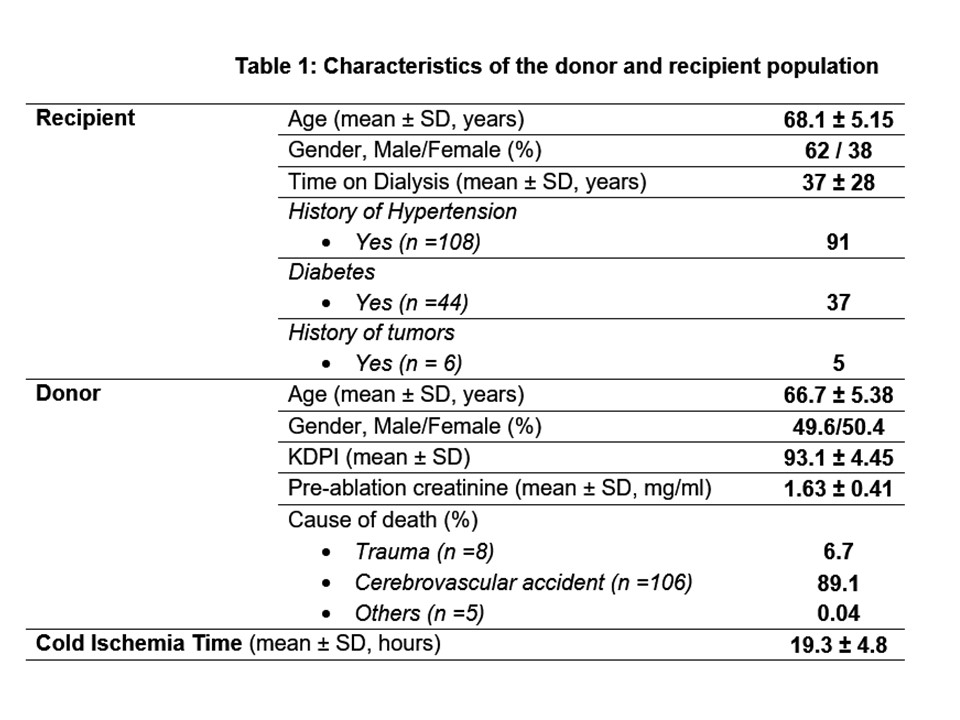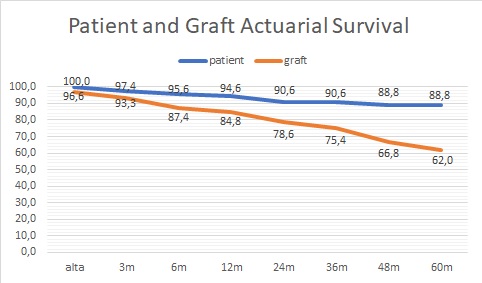Should be use kidneys of KDPI higher than 85 percentage for older recipients?
María del Carmen Rial1, Andres Bello1, Jorge Quinchuela1, Olga Guardia1, Eduardo Chuluyan2, Domingo Casadei1.
1Instituto de Trasplante y Alta Complejidad (ITAC), Buenos Aires, Argentina; 2Microbiología, Parasitología e Inmunologia, Facultad de Medicina, UBA, Buenos Aires, Argentina
Background: High KDPI is associated with a high discard rate along with poor results. The aim of the present work was to evaluate the clinical outcomes of older recipients transplanted with kidney derived from deceased donors with KDPI ≥ 85%.
Methodology: We retrospectively assessed 119 adult patients who underwent renal transplantation (brain-dead donors with KDPI ≥ 85%) between January 2014 and December 2018 at our center. The recipient and donor demographic data is shown in Figure 1.

All grafts were maintained in static cold solution until transplant. The induction therapy was thymoglobulin (72 %) or basiliximab (26 %). The most frequent maintenance immunosuppressive treatment was belatacept + MMF + steroids (45 %) or CNI + MMF + steroids (30 %).
Results: Eighty-seven patients required post-transplant dialysis. The overall patient and graft actuarial survival at one year was 94 % and 87.4 %, while at 5 years was 88.8 and 62,0 %, respectively (Figure 2).

The overall cause of death was infectious (n = 5), cardiovascular (n = 3), trauma (n = 2) and unknown (n = 1). The most frequent cause of graft failure was chronic nephropathy (n = 14) followed by acute rejection (n = 3) and BKV infectious (n = 3). During the follow up period, it was registered at least one rejection episodes, CMV infectious, tuberculosis and tumors in 34 (29 %), 35 (30 %), 4 (3 %) and 5 (4 %) patients, respectively. At one-year post-transplant, the mean serum creatinine and urine protein was 2.0 ± 1.77 and 0.59 ± 0.36, while 1.5 ± 1.4 and 0.3 ± 0.21 mg/ml at five years, respectively.
Conclusion: In summary, our study supports accepting high KDPI kidneys for older wait-listed patients avoiding dialysis exposure, improving the life quality while expand the donor pool.
Fundación del 3er Milenio.
There are no comments yet...
